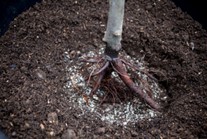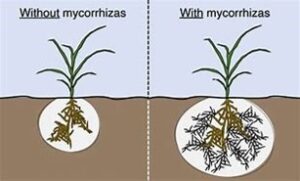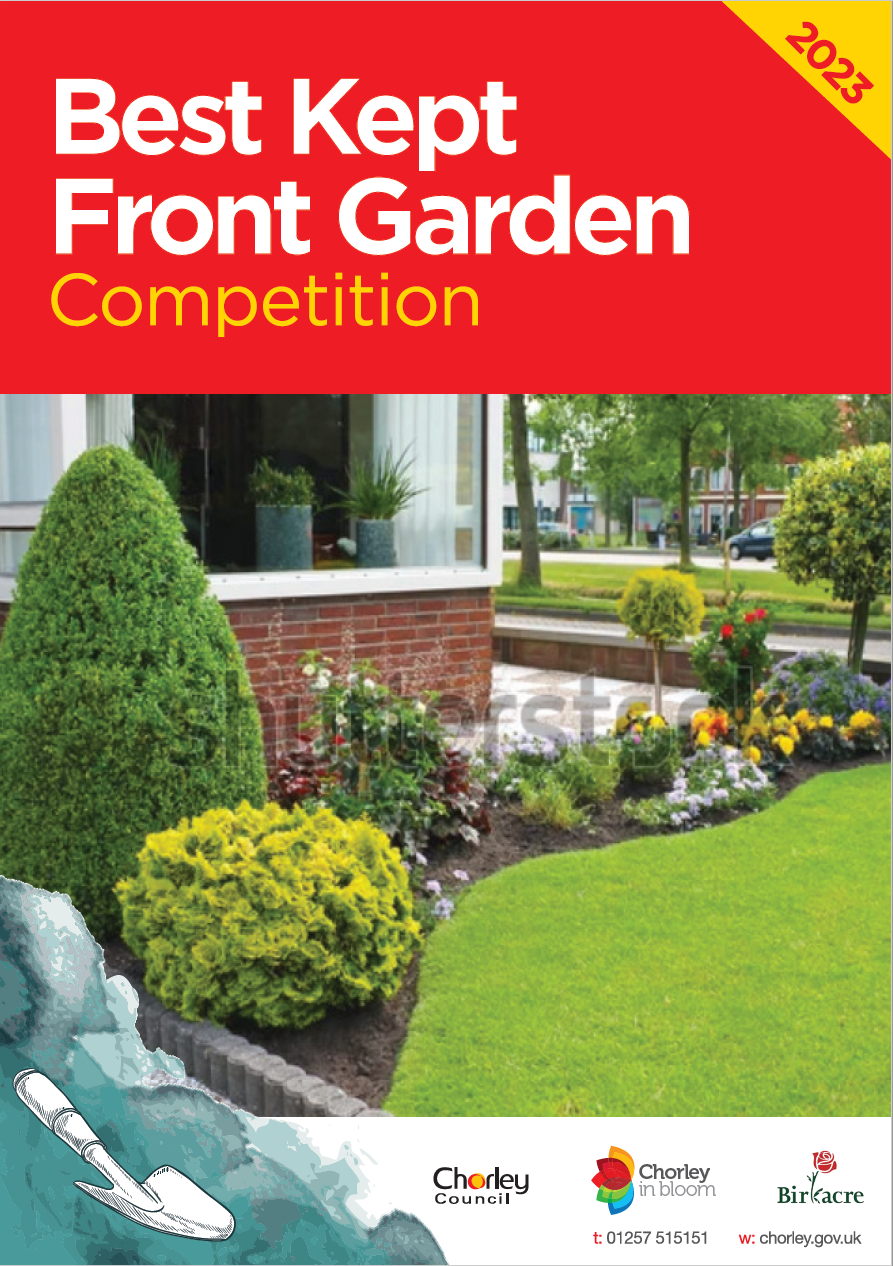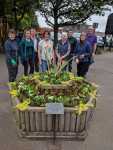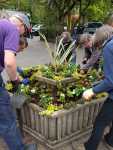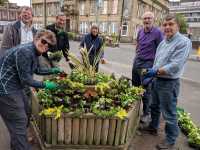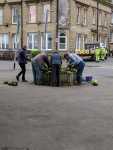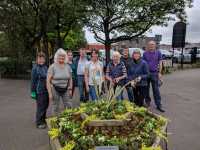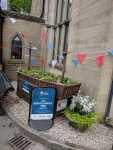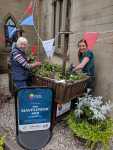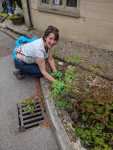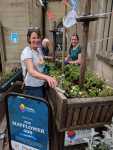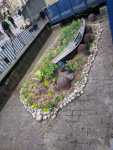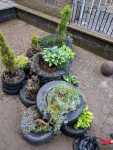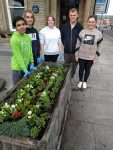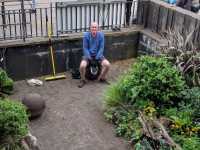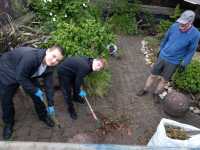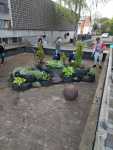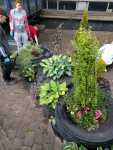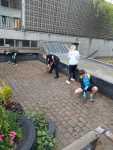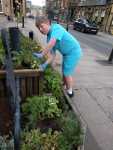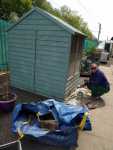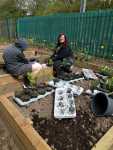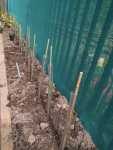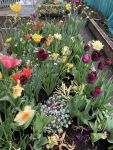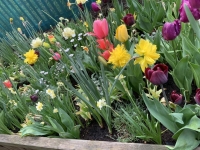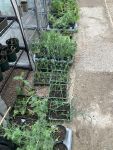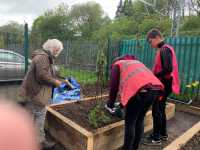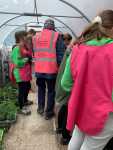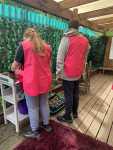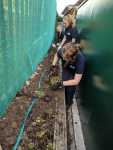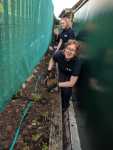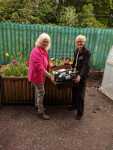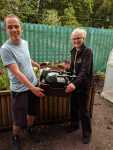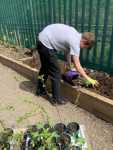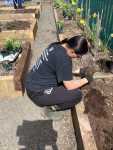Its that time of year again.. Chorley in Bloom and Chorley Council are looking for the Best Kept Front Gardens. Get your application form in as soon as possible. Good Luck!
Download Entry FormMonthly Archives: May 2023
Chorley Garden Society Planter
Today the members of Chorley Garden Society turned out in force to replant their planter opposite the town hall. The theme to celebrate King’s Charles coronation was was red and white begonia semps, blue lobelia and gold lysimachia. The cordeline was replaced by a variegated phormium donated by a member. Well done everyone, the planter looks great.
St Thomas’ Square
To finish off today the Police Cadets worked well together in looking after the two sunken gardens, the barge planter and the oblong planter by the Chorley Police Station under the guidance of their leaders and volunteers from Chorley in Bloom. Weeding, planting, watering and getting rid of the weeds and moss growing between the sets. Well done all of you. You worked really hard tonight. What a difference you’ve made.
This Week at the Teaching & Learning Hub
Linda has given the Chill Out Cabin another coat of paint which has brought out the colour well. New volunteers have been planting more of our fruiting hedge and planted some into pots ready for next week. Well done and thank you all for your help.
The spring flowers are looking fantastic at the new Teaching and learning Hub. They were sown and transplanted by Astley spark School pupils a few months ago. Looks great. Also the veg are ready for planting in the new raised beds a job for the pupils in the next few weeks well done everyone.
Earlier today we were working with 2 year 11 groups from Astley Park School. They finished moving the last of the 8 tons of topsoil we had delivered last week into the various raised beds. They also helped to plant peas, carrots, potatoes and transplanted sedums into larger pots. Thank you everyone, you always work so hard. Well done.
We had a big surprise tonight when about 40 Police Cadets turned up tonight to help with the planting, weeding, sweeping and other tasks that are still needed to be done to be ready for our Grand Opening on the 17th June. The group photo shows some of the volunteers. Thank you everyone for your help.
We had a visit this morning from the ASDA Community Champion who gave Chorley in Bloom a lovely donation of watering cans, pots and seeds. We also had 4 volunteers who helped with tree and vegetable planting. Thank you everyone.
This Week at the Teaching & Learning Hub
We all had a lovely time at the hub today. The sun was shining and ice lollies to cool us all down after working hard moving soil into the raised beds were greatly appreciated. The 2 classes of year 11 pupils from Astley Park School did a great job today alongside their teaching staff, David and myself. Well done everyone.
A Few Tips & Reminders for May
- Many of the bulbs will have finished flowering by now and begin to look untidy, do not be in a hurry to cut back the foliage although it is wise to pinch off the dead flowers to prevent seed forming.
- The dying stems and foliage help build up the bulbs for next year, so it is most important that the foliage be left for about six weeks after flowering to die down naturally.
- Top dress with a handful of bone meal this will also help the bulb to swell and become a storehouse for nutrients for the next flowering season.
- Now the soil is warming up and things are starting to grow, add general purpose fertiliser before covering with mulch especially in borders, the fruit and vegetable patch and containers. Only mulch if the soil is moist.
- Spray roses with fungicide to ward against black spot and mildew. Repeat every fortnight until the autumn. Remember that if an infection sets in, all the stricken leaves must be burnt – do not leave them on the compost heap as this will become the perfect incubation site. Feed with a foliar feed and beware of greenfly – treat immediately if an infestation occurs.
- ‘Chelsea chop’ – for summer and autumn flowering herbaceous perennials. Heleniums, Sedums, Echinacea etc.
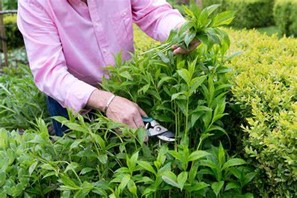
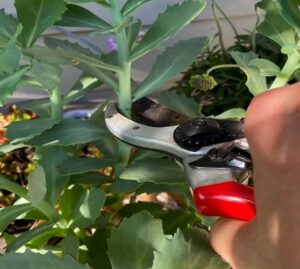
- The cut-back is performed usually in late May or early June – i.e. around the time of the RHS Chelsea Flower Show.
Benefits are: The plants are not so tall and leggy, need less staking and the flowers are smaller but more numerous.
- Clumps of perennials can literally be chopped back by one third to a half using shears or secateurs. This will delay the flowering until later in the summer and keep plants shorter and more compact.
- If you have several clumps of one plant, try cutting back a few, but leaving others. This will prolong the overall flowering time.
- Another method is to cut half the stems back at the front of the clump which will extend the season of flowering rather than delay it.
Should bedding plants be bought yet?
- A full range of bedding plants, container and basket plants are now becoming available –if you are tempted to plant tender plants out early then you must protect on cold frosty nights with fleece or some other method of covering. Bedding plants such as Asters, Antirrhinums, Carnations, Cineraria maritime, Geraniums, Lobelia, Petunia and Stocks are quite hardy.
- Bedding plants such as Ageratum, Begonia, Impatiens, French Marigolds, Fuchsia’s and Nemesia are far less hardy; these plants will need tender care until the last week of May when planting out.
- When planting young bedding plants give the soil a generous top dressing of general-purpose fertilizer, water in well after planting.
CONTAINER GARDENING
Containers are not just for smaller gardens, they can be an attractive addition to larger gardens, especially if you position them close to your kitchen door where you can grab a quick handful of the freshest veg or herbs possible. From carrots and salads to peppers, potatoes and beans there isn’t much that won’t grow well in a container.
There are many reasons why it is an advantage to grow crops in containers:
- Great for those with no garden or just a patio
- You can control soil texture, composition, and nutrients.
- Containers can be sited in positions that are easy to access, so people with mobility problems can still garden.
- It is easier to control pest damage to plants in containers rather than in a garden.
- Trailing plants can be displayed effectively.
- Plants can be protected indoors to give early crops, such as salad crops.
- Downside is that the watering regime is much more important.
Types of Containers – Pros & Cons
- Clay/Terracotta – look good – dry out quicker (put layer of plastics around inside to help retain moisture) – prone to cracking – look for frost proof – to reduce risk of cracking, stand on feet, anything to keep off flat surface (this applies to all containers in the winter).
- Plastic – lighter – don’t dry out as much.
- Metal – frost proof – don’t dry out – heat up quick in summer and can burn roots.
- Wood – half barrels popular for growing fruit trees – problem with rotting over time – extend life with a plastic lining and ensuring holes for adequate drainage.
- Other quirky containers – old baths, jars, tins & pots – make sure adequate drainage – if not drill holes.
- Size – salads & herbs thrive in shallow – 6 ins. deep, Legumes, onions & root crops do better in 12 – 18 ins. Deep.
- There are more sustainable and eco-friendly pots & containers now available, mainly for seed sowing and small plants.
LAWNS
- Continue mowing, increase the frequency as necessary and lower the height of the cut closer to the summer level.
- If we have a warm May once a week mowing will be required.
- In most seasons, this is the best month for weed killing with either a selective weed killer or moss killer.
- Remember the need for dry grass, moist soil and a fine still day when using lawn weed killers – drift from lawn weed killer or moss killer can very quickly scorch tender young bedding plants or shrubs planted around the edge of the lawn.
FRUIT GARDEN
- At this time of year keep a careful watch for signs of aphid, caterpillars and mildew. These pest & diseases are the main problems this month. If you are not completely organic, a regular spray programme each week should keep things under control.
- In recent years there have been quite a few insecticides, fungicides and weedkillers that have been withdrawn from domestic use. There is still a wide range available both organic and non-organic treatments, so if you are not sure which to go for ask at the garden centre or go to the RHS website and you can find a listing of all types available which includes the active chemicals in each.
VEGETABLE GARDEN
- Birkacre and other Garden Centres have a good supply of vegetable plug plants, which is much easier for novices than growing from seed. Brussel sprouts, Cabbage, Cauliflower, Sprouting Broccoli, Leeks, and Onions will have been fully hardened off, so it is safe to plant without any frost protection.
- Runner Beans, Tomato Plants, Marrows Courgettes, Cucumbers and Melons will need frost protection until the end of the month when cold nights are forecast.
TREES & SHRUBS
- When planting any new container grown tree or shrub it used to a recommendation to plant with some form of planting medium such as peat or multi-purpose potting compost and a little fertilizer. Research by the RHS now recommends that you do not do that, because the plant will tend to grow within that added compost when you want the plant to grow out into the surrounding soil as quickly as possible. Dig the hole slightly larger than the plant container. If the roots are growing around the pot, then tease some of them out. Place the plant in the ground at the same depth as in the container and infill with the garden soil. Then water well and continue to water regularly throughout the coming summer. Mycorrhizal fungi are also an effective aid to establishing both bare rooted and container grown plants.
